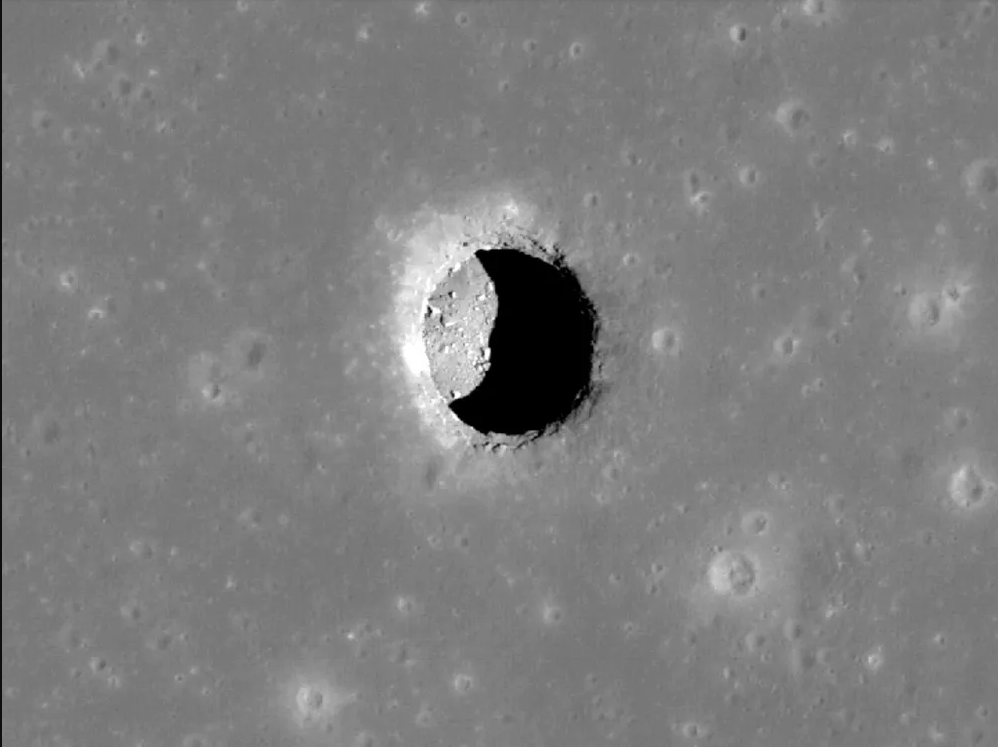
Moon Caves: Sanctuary for Future Explorers
Scientists used radar measurements made by NASA’s Lunar Reconnaissance Orbiter (LRO) to find the cave. LRO, a robotic spacecraft orbiting the Moon since 2009, carries many instruments, including a radar system that can be used to map the lunar surface in detail. The radar data revealed a large cavity beneath the Sea of Tranquillity. The cavern is estimated to be at least 40 metres wide and tens of metres long.
The Sea of Tranquillity, a large lava plain on the western side of the Moon, is also the landing site of Apollo 11, the first manned mission to the Moon. The cave is only 400 kilometres from the Apollo 11 landing site.
For decades, scientists have imagined lunar bases as outposts for scientific research, exploration and potential posts for tourism purposes. However, the Moon’s harsh environment poses significant threats to human life. Since the Moon has no magnetosphere, it is exposed to the full impact of solar radiation and cosmic rays. In addition, the lunar surface is constantly bombarded by micrometeoroids, ranging in size from dust particles to those large enough to cause serious damage.
Lunar caves offer a potential solution to these problems. Thanks to their underground location, they provide a natural shield against radiation and micrometeoroid impacts. Studies show that lunar caves can reduce radiation exposure by 1,000 times compared to the surface. This would be a big change for lunar explorers, enabling them to live and work on the Moon for long periods without facing serious health risks.
Beyond protection from radiation, the potential benefits of lunar caves also include protection from the extreme temperature fluctuations that occur on the surface. The Moon experiences scorching temperatures that can exceed 127°C during the day and -173°C at night. Caves act as a natural buffer against these extreme temperatures, creating a more stable environment for human life.
Researchers believe that lunar caves could also be a valuable resource for future lunar colonists. The Moon is thought to contain water ice deposits in some permanently shadowed craters. Caves near these ice deposits could provide easy access to a critical resource for drinking water and producing rocket fuel through a process called in-situ sourcing.
Of course, using these caves as habitats would be challenging, including the lack of sunlight. Since the caves are naturally dark, a permanent settlement will require artificial lighting. Protection from lunar dust may also be a problem that must be solved to prevent researchers from experiencing significant respiratory problems. Despite these challenges, the potential rewards of lunar caves seem great. With further exploration and research, these natural formations could become the foundation for sustainable human presence on the Moon and usher in a new era of space exploration and scientific discovery.
REFERENCES
- 1. https://www.space.com/moon-cave-lunar-exploration-radar-images
- 2. https://phys.org/news/2024-07-scientists-cave-moon-future-explorers.html
